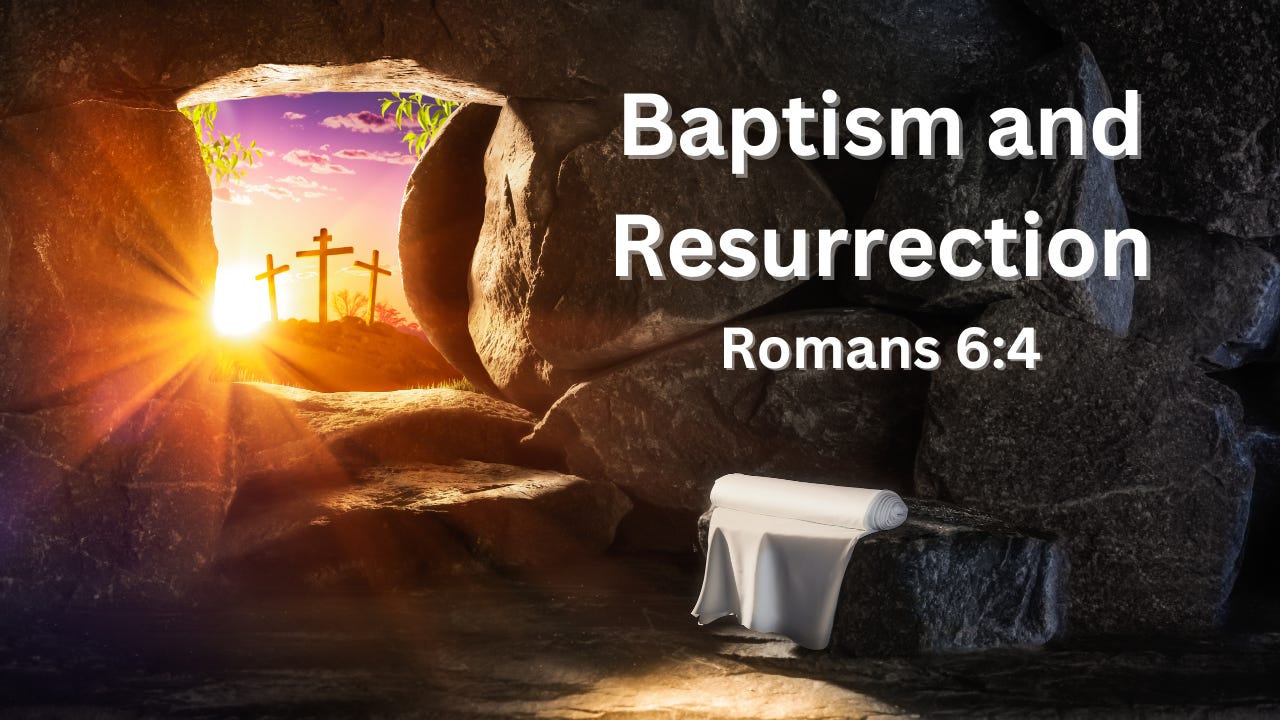Therefore we were buried with Him through baptism into death, that just as Christ was raised from the dead by the glory of the Father, even so we also should walk in newness of life. (Romans 6:4)
In Romans 6:3, Paul connected the death of Jesus and baptism.
He continues the same thought but moves from death to life. Baptism is not merely when a sinner dies to sin but also when new life is given.
Baptism: a Death and Burial.
By submitting to baptism, a person dramatically enters into a profound connection with Christ and comes in contact with His saving blood. His blood was shed in His death, and we are baptized into that very same death where we contact His blood (Matthew 26:28; Acts 2:38). - Pollard, Truth for Today Commentary, 203
Baptism is intimately connected to the death of Jesus on the cross and His burial. Considering baptism from a biblical viewpoint turns our gaze directly to the cross of Christ.
Baptism imitates the death and burial of Jesus. But the connections don’t stop here.
The Connection Between Jesus’ Resurrection and Baptism.
The reason people “were buried…through baptism” into Christ’s death (Romans 6:3) is “that (China - in order that) they rise to live a new life just as Jesus did when he arose. Before His death the Lord was dealing with sin that it might be destroyed. Having died his Father raised him to a glorious and new life.
The saint experiences something similar. He, in loving submission, claims Christ’s experience as something he is to follow. He, in Christ, chooses the destruction of sin and newness of life. - McGuiggan, Romans, 187-188
Romans 1:3-4 reminds us that the Gospel of God is all about His Son, Jesus Christ. Jesus’ resurrection from the dead is central to the “good news.” Similarly, Jesus’ resurrection from the dead is also central to baptism.
The apostle Paul emphasizes that the same power that raised Christ from the dead also raises us up to “walk in newness of life.”
In Him you were also circumcised with the circumcision made without hands, by putting off the body of the sins of the flesh, by the circumcision of Christ, buried with Him in baptism, in which you also were raised with Him through faith in the working of God, who raised Him from the dead. And you, being dead in your trespasses and the uncircumcision of your flesh, He has made alive together with Him, having forgiven you all trespasses, (Colossians 2:11-13)
The earliest messages of the first-century church centered on the events of the cross. What more powerful way to recapture the central events of Jesus’ life than in baptism? Due to its connection to the heart of the gospel, it is hardly a side issue or unnecessary, as some argue. Everett Ferguson keenly observed that “only a few (fringe) heretics of the ancient church tried to dehydrate the new birth.” (Ferguson, 854) The gospel story is reenacted each time a person is baptized. - Pollard, Truth for Today Commentary, 205
Baptism imitates the death, burial, and resurrection of Jesus Christ.
Remember that all of this is said in the context of Paul refuting the arguments of some who said the gospel encouraged more sinning. Certainly, it did not - even baptism illustrated how Christians had died to sin and were raised up from that “watery grave” to live a new life.




